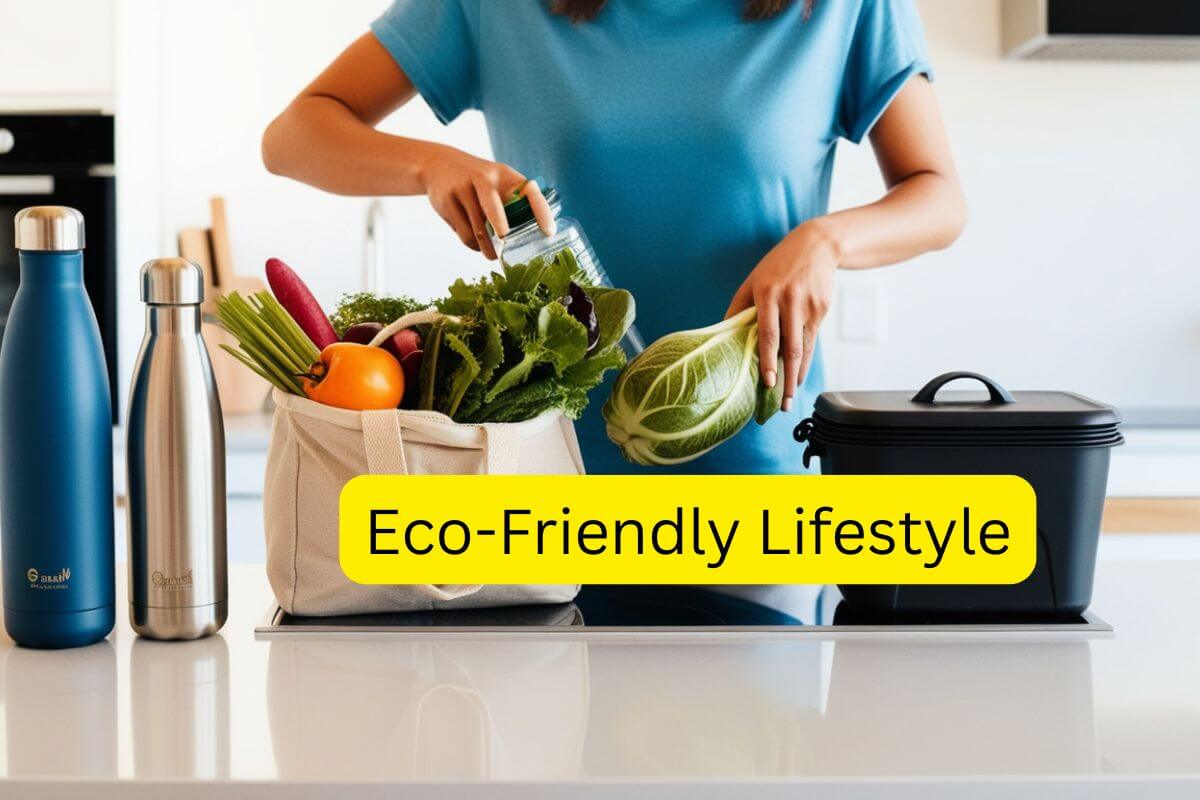Hey there! So, you’re thinking about going green and living a more eco-friendly lifestyle? That’s awesome! Not only is it great for the planet, but it can also save you some cash and make you feel like you’re making a real difference. I know the idea of “going green” might sound overwhelming—like you need to overhaul your entire life overnight. But trust me, it’s all about small, intentional changes that add up over time. In this article, I’m going to walk you through practical, doable ways to live sustainably, from your kitchen to your wardrobe to your daily commute. Let’s dive in and make an eco-friendly lifestyle fun, approachable, and totally achievable!
Why Choose an Eco-Friendly Lifestyle?
Before we get into the how-to, let’s talk about why this matters. Our planet is facing some big challenges—climate change, deforestation, plastic pollution, you name it. Every year, we produce over 2.24 billion tons of municipal solid waste globally, according to the World Bank, and a lot of that ends up in landfills or our oceans. Yikes! By adopting eco-friendly habits, you’re helping reduce waste, conserve resources, and protect ecosystems for future generations. Plus, sustainable living often means healthier choices for you—like eating fresh, local food or cutting out toxic chemicals from your home. It’s a win-win!
Ready to get started? Here are some practical tips to live an eco-friendly lifestyle, broken down into easy-to-tackle categories.
1. Green Your Kitchen: Sustainable Food Choices

Your kitchen is a great place to kick off your eco-friendly lifestyle journey. Food production accounts for about 25% of global greenhouse gas emissions, as noted by the United Nations, so making smarter choices here can have a big impact. Here’s how to green your plate:
Shop Local and Seasonal
Head to your local farmer’s market or join a CSA (Community Supported Agriculture) program. Locally grown produce doesn’t have to travel thousands of miles, which cuts down on carbon emissions. Plus, seasonal fruits and veggies are fresher, tastier, and often cheaper. Not sure what’s in season? The Seasonal Food Guide can help you figure out what’s fresh in your area.
Cut Back on Meat and Dairy
I’m not saying you have to go full vegan (unless you want to!), but reducing meat and dairy can make a huge difference. Livestock farming is responsible for about 14.5% of global greenhouse gas emissions, according to the FAO. Try incorporating Meatless Mondays or experimenting with plant-based recipes. Lentil tacos or a creamy cashew-based pasta sauce? Yes, please! Check out Minimalist Baker for some delicious plant-based inspiration.
Reduce Food Waste
Did you know that about 30-40% of food in the U.S. gets thrown out, per the EPA? That’s wild! To cut back on waste:
- Plan your meals. Make a weekly menu and stick to a shopping list to avoid impulse buys.
- Store food properly: Use airtight containers, and learn which fruits and veggies belong in the fridge (hint: not tomatoes!).
- Get creative with leftovers: Turn last night’s roasted veggies into a soup or stir-fry.
Pro tip: Compost your food scraps! Even if you don’t have a backyard, many cities offer community composting programs. Websites like CompostNow can connect you with local options.
2. Sustainable Home Hacks
Your home is your sanctuary, and it’s also a hotspot for eco-friendly upgrades. From energy-saving tricks to waste reduction, here’s how to make your space greener.
Switch to Energy-Efficient Appliances
If you’re in the market for a new fridge, washer, or AC unit, look for the Energy Star label. These appliances use less electricity, which lowers your carbon footprint and your utility bills. Learn more about Energy Star products at EnergyStar.gov. Can’t afford new appliances? No worries—simple habits like unplugging electronics when not in use or using a power strip can cut “phantom” energy use.
Embrace Reusables
Single-use plastics are the enemy of an eco-friendly lifestyle. Swap them out for reusable alternatives:
- Water bottles: A sleek stainless steel or glass bottle is way cooler than disposable plastic.
- Coffee cups: Bring your own tumbler to the coffee shop—some places even offer discounts!
- Shopping bags: Keep reusable totes in your car or purse for impromptu grocery runs.
Check out EarthHero for a wide range of sustainable, reusable products to kickstart your plastic-free journey.
Green Your Cleaning Routine
Many conventional cleaning products are loaded with harsh chemicals that aren’t great for you or the environment. Try eco-friendly brands like Seventh Generation or Method, or make your own cleaners with simple ingredients like vinegar, baking soda, and lemon. The Environmental Working Group has a great guide to safe, green cleaning products. Bonus: DIY cleaners are dirt cheap!
3. Eco-Friendly Fashion: Build a Sustainable Wardrobe
Fast fashion is a major culprit in environmental harm, producing 10% of global carbon emissions, according to the UN Environment Programme. But you don’t have to sacrifice style to go green. Here’s how to make your wardrobe more sustainable:
Shop Secondhand
Thrift stores, consignment shops, and online platforms like ThredUp or Poshmark are treasure troves for unique, affordable finds. Buying secondhand keeps clothes out of landfills and reduces the demand for new production. Visit ThredUp to browse thousands of pre-loved pieces. Plus, who doesn’t love scoring a vintage denim jacket for a steal?
Choose Sustainable Brands
When you do buy new, support brands that prioritize ethical practices and eco-friendly materials like organic cotton, hemp, or recycled fabrics. Some great ones to check out include Patagonia, Everlane, and Eileen Fisher. Look for certifications like Fair Trade or GOTS (Global Organic Textile Standard) to ensure you’re making a responsible choice. Good On You is an awesome resource for checking how sustainable your favorite brands are.
Care for Your Clothes
Extend the life of your wardrobe by washing clothes in cold water (it saves energy!) and air-drying when possible. Mend small tears or loose buttons instead of tossing items. Not a sewing pro? YouTube has tons of tutorials to teach you basic repairs.
4. Green Transportation: Get Around Sustainably
Transportation is another big contributor to greenhouse gas emissions, but there are plenty of ways to get from A to B without harming the planet.
Walk, Bike, or Use Public Transit
If you live in a walkable or bike-friendly area, ditch the car for shorter trips. Not only is it eco-friendly, but it’s also a great way to sneak in some exercise. For longer commutes, buses and trains are way greener than driving solo. Bonus: you can catch up on podcasts or reading while you ride! Use Transit to plan public transit routes in your city.
Carpool or Go Electric
If public transit isn’t an option, try carpooling with coworkers or friends to cut down on emissions. Dreaming of a new car? Consider a hybrid or electric vehicle (EV). EVs are becoming more affordable, and many regions offer tax incentives to sweeten the deal. Learn about EV incentives at FuelEconomy.gov.
Work from Home (When Possible)
If your job allows it, working from home even a few days a week can significantly reduce your carbon footprint. Fewer commutes = less fuel burned. Plus, who doesn’t love working in cozy sweatpants?
5. Reduce, Reuse, Recycle (The Right Way)
You’ve probably heard the “reduce, reuse, recycle” mantra a million times, but it’s still the backbone of an eco-friendly lifestyle. Here’s how to do it effectively:
Reduce
The best way to cut waste is to consume less in the first place. Before buying something new, ask yourself, Do I really need this? Can I borrow, rent, or repurpose something I already have? Saying no to unnecessary purchases is a powerful eco-friendly move.
Reuse
Get creative with what you already own. Old T-shirts can become cleaning rags, glass jars can store pantry staples, and that slightly scuffed coffee table might just need a fresh coat of paint. Websites like Pinterest are goldmines for upcycling inspiration.
Recycle Properly
Recycling can be confusing, but doing it right makes a difference. Check your local recycling guidelines—some areas accept plastics #1 and #2 but not #5, for example. Rinse out containers to avoid contamination, and avoid “wishcycling” (tossing questionable items in the bin and hoping they’re recyclable). RecycleNation lets you search recycling rules by zip code.
6. Get Involved: Advocate for Change
Living eco-friendly isn’t just about personal choices—it’s also about pushing for systemic change. Here are a few ways to make your voice heard:
Support Eco-Friendly Policies
Vote for candidates who prioritize climate action and environmental justice. Stay informed about local policies, like bans on single-use plastics or investments in renewable energy, and let your representatives know you support them. NRDC is a great resource for tracking environmental policies.
Educate Others
Share what you’ve learned with friends and family. Host a clothing swap, start a compost club, or post about your eco-friendly habits on social media (without being preachy, of course!). Small conversations can inspire big changes.
Volunteer
Join local environmental groups for cleanups, tree-planting events, or advocacy campaigns. Websites like VolunteerMatch can connect you with opportunities in your area.
Final Thoughts: Start Small, Dream Big
Living an eco-friendly lifestyle doesn’t mean you have to be perfect—it’s about progress, not perfection. Start with one or two changes, like bringing a reusable water bottle or cutting back on meat once a week. As you get comfortable, add more habits to your routine. Before you know it, sustainable living will feel like second nature.
